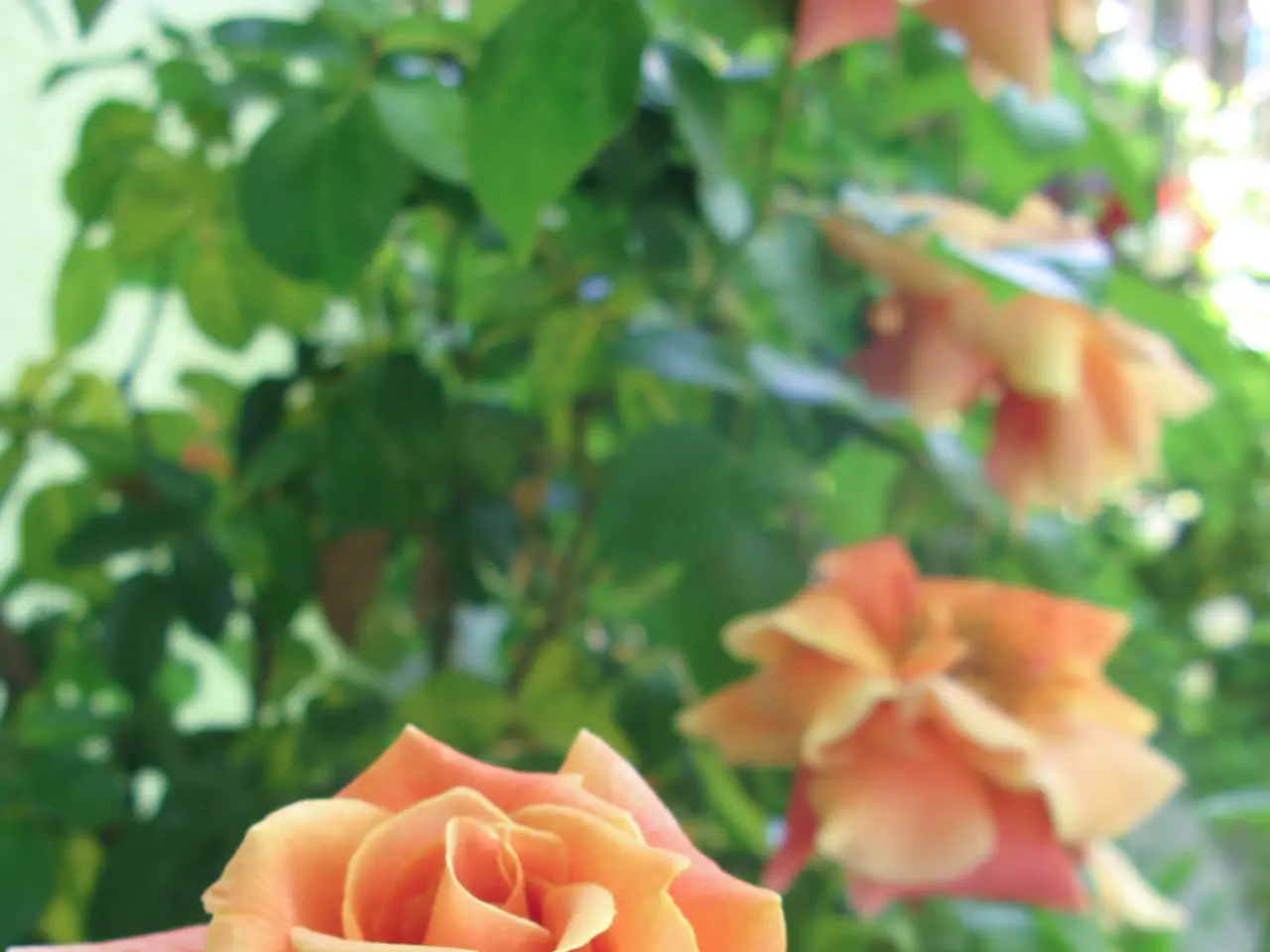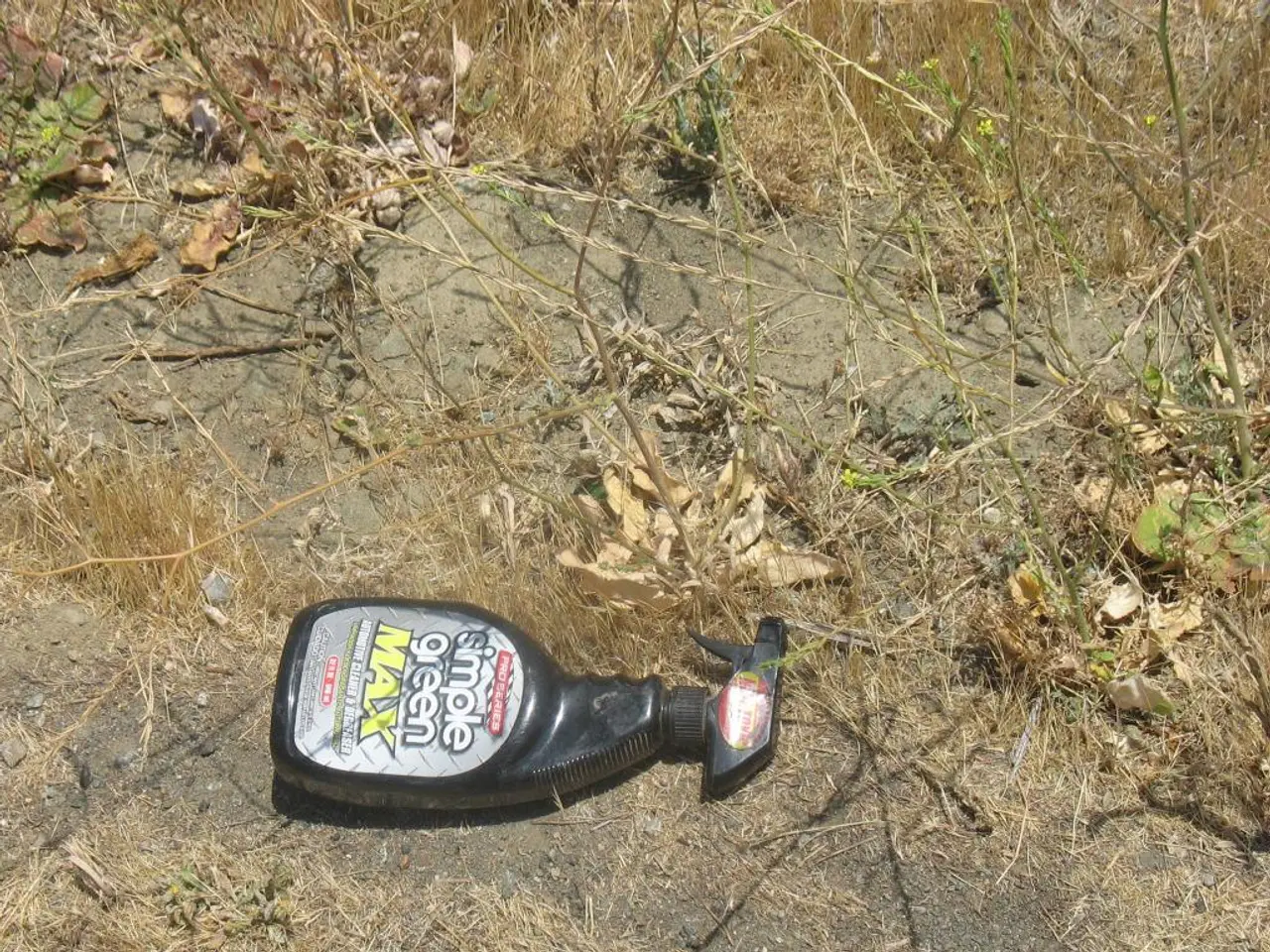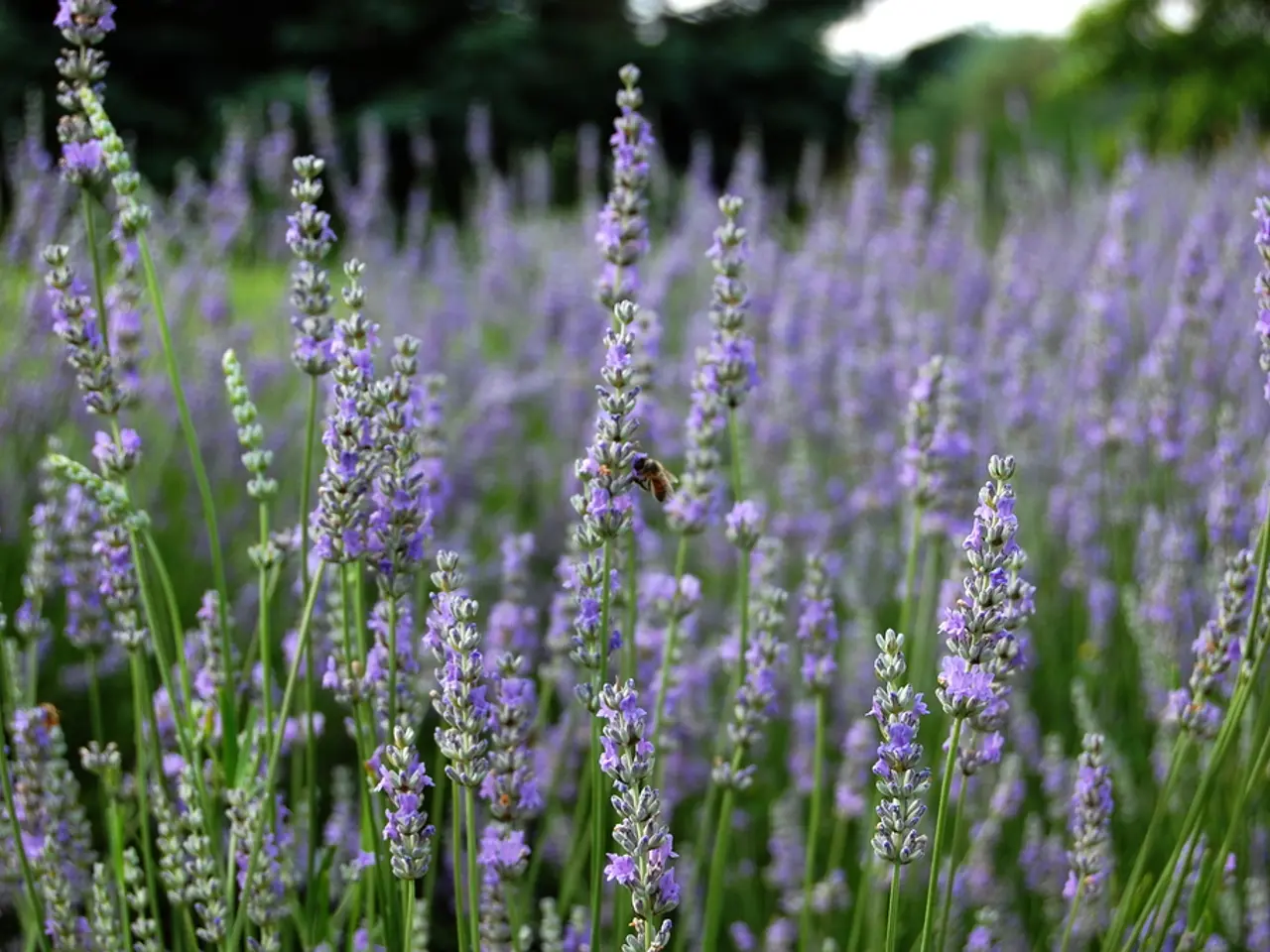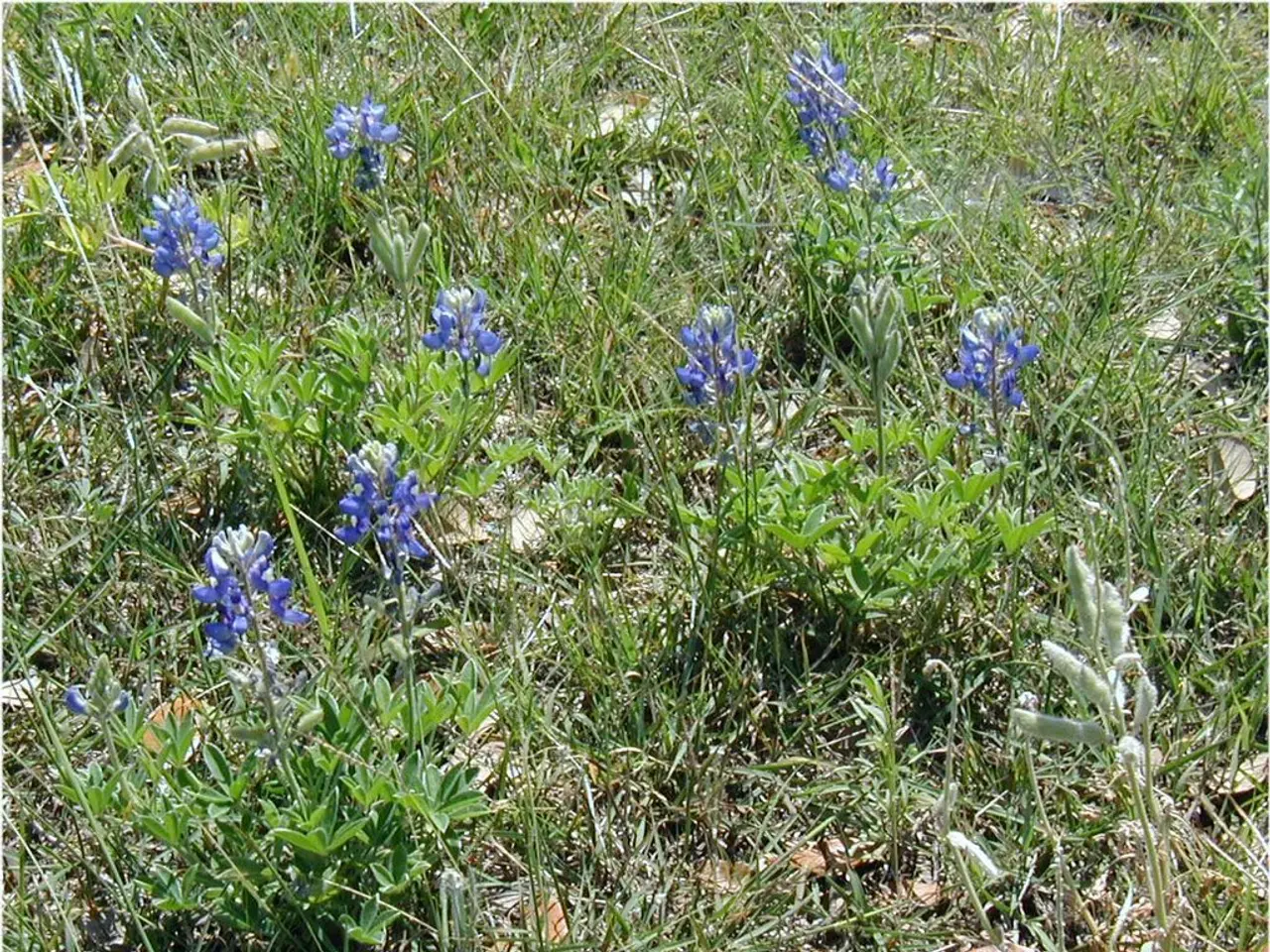Pruning Roses in Autumn: The Ideal Time to Trim Your Valued Shrubs Before Winter
In the realm of gardening, the art of rose pruning varies significantly depending on the climate. This article explores the differences between pruning roses in colder and warmer climates, offering valuable insights for gardeners everywhere.
**Rose Pruning in Colder Climates**
Timing is crucial when pruning roses in colder regions. Typically, pruning is done in late winter or early spring, while the plant is dormant and before new growth begins. This approach allows the rose to recover quickly in the growing season without risking frost damage to new shoots.
The method for pruning roses in colder climates involves removing dead, damaged, or crossing branches to improve air circulation and shape the bush. Approximately one-third of the branches are cut back, pruning just above a growth node at an angle to encourage healthy new growth.
In colder areas, additional steps are taken to protect the rose during winter, such as piling soil or mulch around the base, using leaf collars, wrapping the bush with burlap, and removing leaves but leaving hips to protect buds. Since roses are dormant in winter, pruning at this time is less stressful for the plant, and wounds heal better in preparation for spring growth.
**Rose Pruning in Warmer Climates**
In warmer climates where harsh winters are absent or mild, roses can be pruned later or even throughout the growing season, sometimes after bloom cycles to encourage repeated flowering. The risk of frost damage is low, so heavy winter protection like mulching or wrapping is often unnecessary. Pruning may focus more on shaping and encouraging flowering rather than protecting against cold.
Since warmer climates may have dry spells, pruning is often paired with strategic watering schedules to maintain plant health through heat stress. For example, watering is more frequent during active growth and reduced in cool, dormant periods.
**Comparing Colder and Warmer Climates**
To summarise, rose pruning in colder climates focuses on preparing plants for winter dormancy and protecting them from cold damage, while in warmer climates, pruning and care are geared more toward maintaining flowering and managing seasonal growth cycles with less concern for frost.
A table comparing the key aspects of rose pruning in colder and warmer climates is provided below:
| Aspect | Colder Climates | Warmer Climates | |-------------------------|-----------------------------------------|-----------------------------------------| | **Pruning time** | Late winter or early spring (dormant) | After blooms or during growing season | | **Pruning method** | Remove dead/damaged wood, open center, cut back 1/3 | Light trimming post-bloom, shaping | | **Winter protection** | Mulch, soil mounding, burlap wrapping | Minimal or no need for winter insulation | | **Watering practices** | Reduced watering in dormancy | Moderate to frequent watering, adjust with heat and season |
Rambling roses can also be hard-pruned between late fall and late winter, making it easier to shape the plant when it is bare.
Melanie Griffiths, an experienced gardener with over 20 years of work in homes and gardens media, has spent the last few years transforming her own garden and is a passionate organic home grower. She is a featured gardener in this article, offering her insights into rose pruning in various climates.
For more information on rose pruning and gardening tips, subscribe to our newsletter, download our e-book, or visit our shop at [platform].
- The pruning method in warmer climates, unlike colder ones, involves light trimming post-bloom to encourage repeated flowering, as the risk of frost damage is low.
- In colder climates, apart from pruning and shaping, gardeners focus on preparing the plants for winter dormancy by applying protective measures such as mulch, soil mounding, and burlap wrapping.







